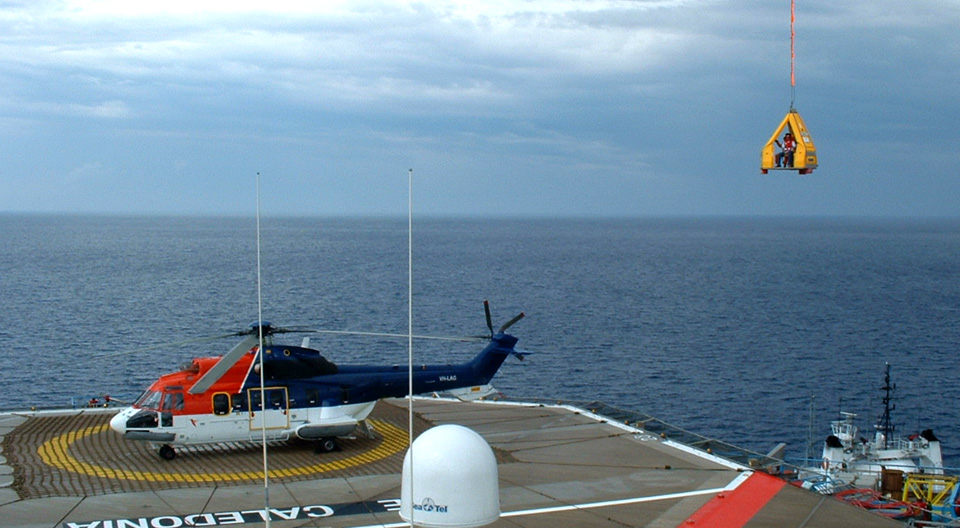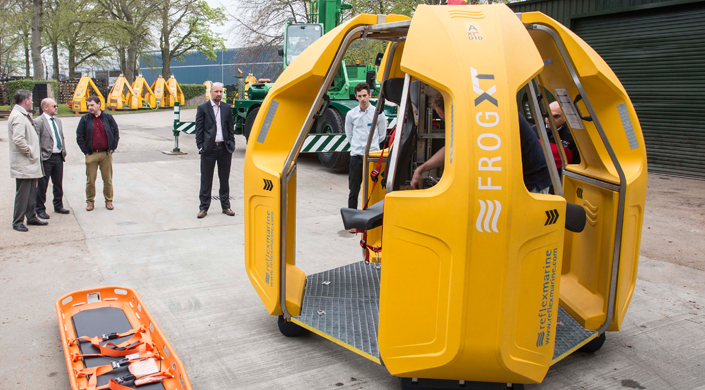Operators Look to Cost Effective Crew Transfer Methods in Light of Oil Price Drop

With oil prices dropping, budgets in all areas of offshore operations, including crew transfers, are coming under pressure. The question that many operators are currently faced with is: how to cut costs but maintain a strong safety culture?
The safety benefits of marine transfer over helicopter transfer have been frequently debated in recent years, especially in light of a number of fatal helicopter ditchings.
In a recent study by DNV GL, marine transfer was highlighted as a substantially safer methodology over that of helicopter transfer. An analysis of incident data revealed that the risk of fatalities for marine transfer was estimated as 11 times lower than that of helicopter transfer.
With the current downward trend in oil prices, focus has shifted to the area of cost as operators drive for increased efficiency. With this renewed emphasis on cost efficiency, operators are considering the move towards marine based transfer, which offers considerable savings without compromising safety.
Transferring crew by helicopter involves a huge initial financial outlay as well as a commitment to costly lifetime maintenance. A day’s operational downtime experienced as a result of helicopter groundings, for example, can cost operators hundreds of thousands of dollars in lost earnings.
Marine-based methods of crew transfer involving vessels and personnel capsules lifted by crane can be a cost-effective and safe alternative and provide the greatest impact on safety for each dollar invested.
Marine transfer expert Reflex Marine has worked closely with operators for more than 20 years to develop not only a cost-effective method of crew transfer but also a product range of premium quality and unrivalled safety. The FROG-XT range provides operators with cutting edge technology with a highly cost-effective product life cycle.

With other less advanced rope style baskets on the market, it has often been the misconception that the FROG is a more expensive option than the rigid basket.
Sales Manager for Reflex Marine, Grant Wintle commented: “It is commonly understood that our products are both the safest and highest quality devices available in the marketplace. However, the issue of cost is often an initial concern for operators comparing our product to rope basket alternatives. As a result we have undertaken a study which proves on paper that the FROG-XT is the most cost effective option when taking into account product life cycle*.
“If you take four-person transfer devices, for example, the FROG-XT4 costs up to 5% less than a rigid basket over the lifetime of the product. It also lasts up to 33% longer, costs up to 38% less to inspect and maintain and is up to four times faster to inspect and maintain, reducing downtime”.
Despite the current economic climate for the oil industry, Reflex Marine believes safety does not have to be sacrificed in order to reduce crew transfer budgets. The company’s ultimate goal is to play its part in getting crews home safely. Reflex Marine will continue to work with operators to help them put the systems in place to achieve this.
*Cost comparison based on:
- FROG-XT4 life-cycle costs and 4 person rigid basket.
- A 12-year period and based on low usage levels (<100 transfer lifts per year).
- Information available as of November 2014.
- A FROG-XT4 lifespan at low use is 12 years and the assumed lifespan of a rigid basket is 8 years.
- If you would like to learn more about the basis of our estimates please contact us.Bottom of Form
Media Partner OilVoice

